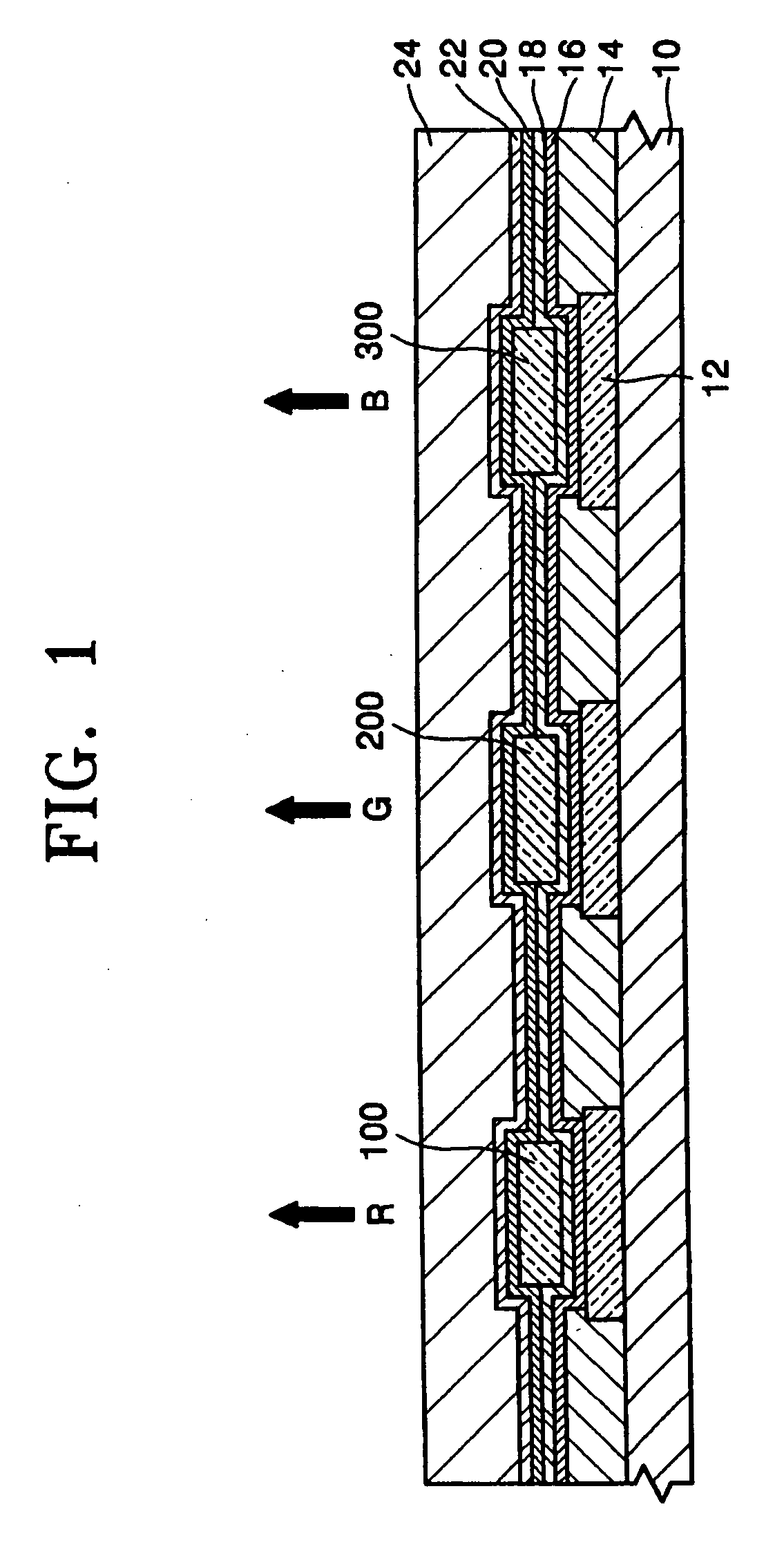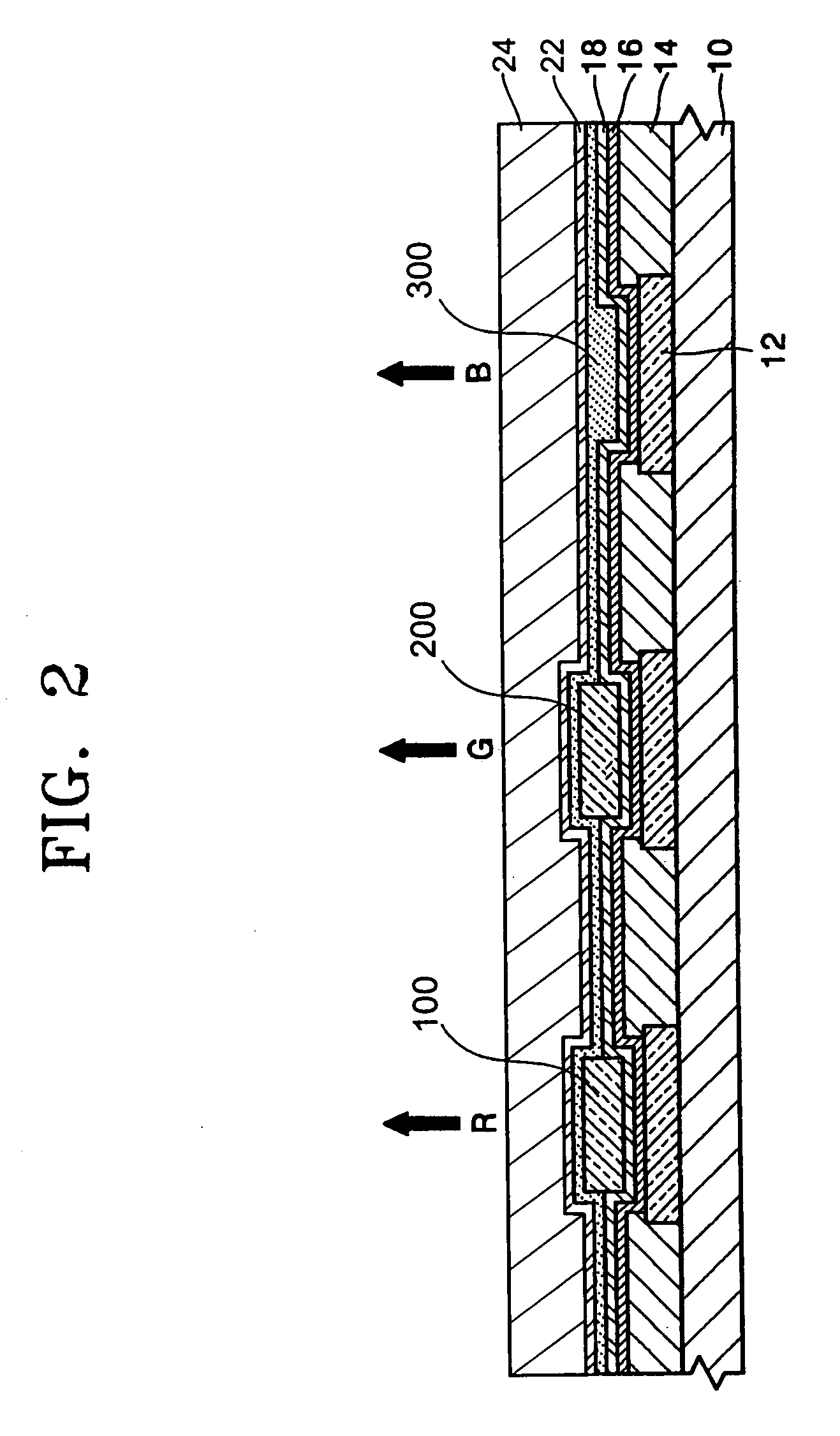Organic electroluminescent device
a technology of electroluminescent devices and electroluminescent tubes, which is applied in the direction of discharge tube luminescnet screens, natural mineral layered products, etc., can solve the problems of limiting the efficiency of processes in all the methods of manufacturing organic el devices, and preventing efficient mass production
- Summary
- Abstract
- Description
- Claims
- Application Information
AI Technical Summary
Benefits of technology
Problems solved by technology
Method used
Image
Examples
example 1
[0071] A hole injection layer (IDE 406, manufactured by Idemitsu Kosan Co., Ltd.) having a thickness of 30 nm and a hole transport layer (IDE 320, manufactured by Idemitsu Kosan Co., Ltd.) having a thickness of 30 nm were formed on a patterned test cell. Then, a host material composed of 90 parts by weight of 4,4′-N,N′-dicarbazole-biphenyl (CBP) (manufactured by UDC Co., Ltd.,) and 10 parts by weight of BAlq (Aluminum(III) bis(2-methyl-8-quinolinato)4-phenylpheolate), was doped with a dopant, (1-(phenyl)isoquinoline) iridium (III) acetylanetonate [Ir(piq)2acac], with a doping concentration of 10% by weight, and then layered to a thickness of 35 nm on the hole transport layer and patterned using LITI to obtain a phosphorescent light emitting layer. A blue fluorescent light emitting layer composed of IDE 140 (manufactured by Idemitsu Kosan Co., Ltd.) doped with IDE 105 (manufactured by Idemitsu Kosan Co., Ltd.), was formed to a thickness of 10 nm on the entire surface of the resultant...
example 2
[0072] An organic EL device was manufactured in the same manner as in Example 1, except that 75 parts by weight of CBP and 25 parts by weight of BAlq were used to form a phosphorescent light emitting layer.
example 3
[0073] An organic EL device was manufactured in the same manner as in Example 1, except that 50 parts by weight of CBP and 50 parts by weight of BAlq were used to form a phosphorescent light emitting layer.
PUM
| Property | Measurement | Unit |
|---|---|---|
| HOMO | aaaaa | aaaaa |
| HOMO | aaaaa | aaaaa |
| HOMO | aaaaa | aaaaa |
Abstract
Description
Claims
Application Information
 Login to View More
Login to View More - R&D
- Intellectual Property
- Life Sciences
- Materials
- Tech Scout
- Unparalleled Data Quality
- Higher Quality Content
- 60% Fewer Hallucinations
Browse by: Latest US Patents, China's latest patents, Technical Efficacy Thesaurus, Application Domain, Technology Topic, Popular Technical Reports.
© 2025 PatSnap. All rights reserved.Legal|Privacy policy|Modern Slavery Act Transparency Statement|Sitemap|About US| Contact US: help@patsnap.com



